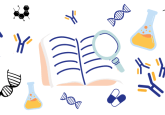ICH M10: updated Q&A document from the European Medicines Agency

The ICH M10 guidelines provide recommendations on method development and validation for bioanalytical assays utilized in drug quantification, as well as recommendations for sample analysis and reporting. Since its adoption in July 2022, the US Food and Drug Administration (FDA) issued final guidance in November 2022. The ICH M10 guidelines came into effect on January 21, 2023.
A collection of questions and answers have been published by the EMA, in response to questions posed during the ICH M10 commentary period. This Q&A document is intended to provide additional clarification surrounding some of the bioanalytical issues covered in the guidelines. The EMA hopes that this will promote convergence and improve the harmonization of bioanalytical method validation and study sample analysis.
Interested in learning more about ICH M10? Check out our latest features on this topic:
- ICH M10 implementation: global execution and future considerations
- Coffee Chat: reporting requirements for ICH M10
- Perspectives on the ICH M10 guidance and its impact on the regulatory landscape for chromatographic assays
- Infographic: ICH M10 – What’s new?
Each question and answer pair is linked to a specific guideline section and includes a concise explanation of how the guideline should be used. An example can be seen below:
Q) In situations where a matrix is unavailable (e.g., shortage, 3Rs – Reduce, Refine, Replace) can a similar surrogate matrix (e.g., human plasma) be used to dilute samples?
A) Yes, as long as the use of the surrogate matrix meets the recommendations of the guideline, including accuracy and precision, lack of interferences, etc. and the dilution quality control samples (QCs) are processed in the same way. The rationale needs to be well justified because the approach might be questioned.
To view the full Q&A document, click here.





